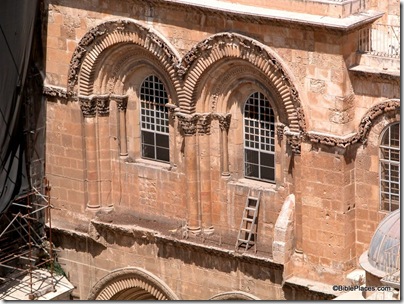Discoveries from excavations at Tell el-Dab’a, the Hyksos capital in Egypt, were announced recently in a press release from the University of Vienna, but the article was only available in German. Joe Lauer has received and passed along a statement from the press office in English, which is given below. Photos of the cuneiform tablet, horse burial, and archaeologist are linked at the bottom of this page.
A team of the Austrian Archaeological Institute in Cairo and of the University of Vienna under Prof. Manfred Bietak and Irene Forstner-Mueller excavated recently a palace of the Hyksos king Khayan (c. 1600-1585 BC). The site is called Tell el-Dab‘a and it was the capital of the Hyksos kings, who ruled the northern part of Egypt between 1640 and 1530 BC. The antiquities were revealed just under the agricultural crust in a rescue operation. It became clear that this palace in the size of over 10,000 sqm is of northern Syrian type and ranges very well among the biggest palaces found thus far in northern Syria.
Two finds this season were particularly remarkable. First a fragment of a cuneiform letter written in southern Mesopotamian style and originating most probably in Babylon. As Karen Radner and Frans van Koppen from the University College London – two eminent scholars in this field – found out, this fragment was a letter and can be dated according to its orthography to the last 50 years of the Old Babylonian Kingdom of Hammurabi. The find shows the far reaching international ties of the Hyksos and at the same time connects Egyptian chronology with the Mesopotamian chronology – thus far the synchronisation with Egypt was a controversy of scholars. Now this matter seems to be settled in favour of a low Mesopotamian chronology with the conquest of Babylon around 1550 BC.
The second important discovery was the burial of a horse, which is situated and stratigraphically well connected within the palace. It was a mare between 5 and 10 years. It was obviously not a chariot horse but more likely used for breeding. It was the Hyksos who introduced the horse to Egypt and it is the oldest undisputed horse burial found in this country. Its position in the palace suggests that this mare was a pet of the Hyksos, most likely king Khayan.
The third important discovery was a courtyard used for ritual feasts. Numerous pits with over 5000 vessels, buried ritually with remains of meals such as animal bones, were found. Such institutions as this courtyard, secured behind enormous walls, are known from texts in Mesopotamia and the Levant since the third millennium BC. The feasts were in honour of deceased kings or at the occasion of birthdays of gods. It is the first time that such rituals are attested in Egypt by a population originating from the northern Levant.
The Hyksos period is still very obscure from historical point of view, but the long going excavation of the Austrian team has contributed to a series of corrections in its historiography. The population originated most probably from Lebanon and northern Syria, as the newly discovered palace and the pottery shows. They were people with an urban background and came originally in the late 12th Dynasty (Middle Kingdom) as shipbuilders, sailors, soldiers and craftsmen to the country where the pharaohs settled them in a harbour town in the north-eastern Delta, the later city of Avaris. In a time of political weakness they were able to establish a small kingdom there and soon afterwards were able to control the Delta and Middle Egypt until their former vassals in Upper Egypt, particularly king Ahmose defeated them and founded the New Kingdom.
